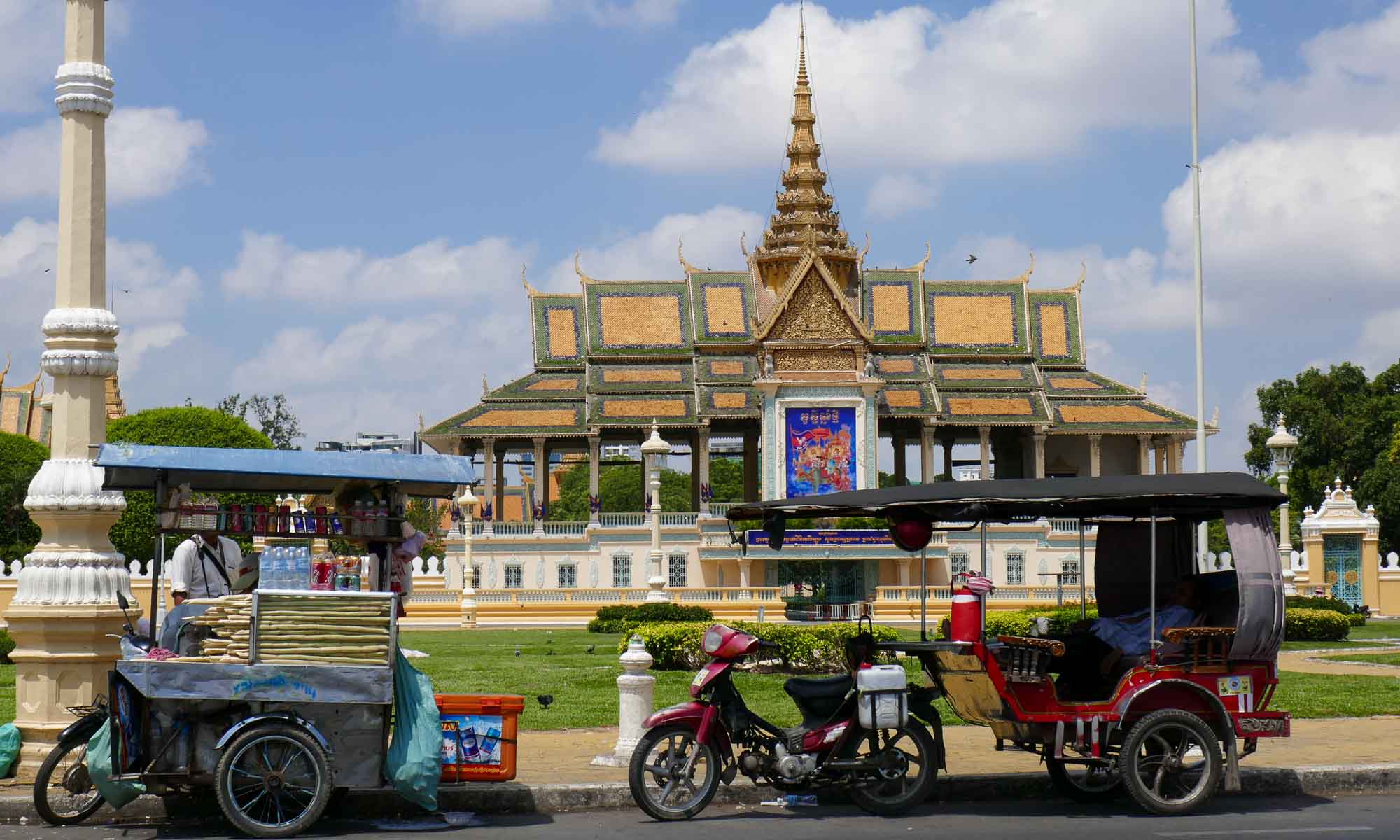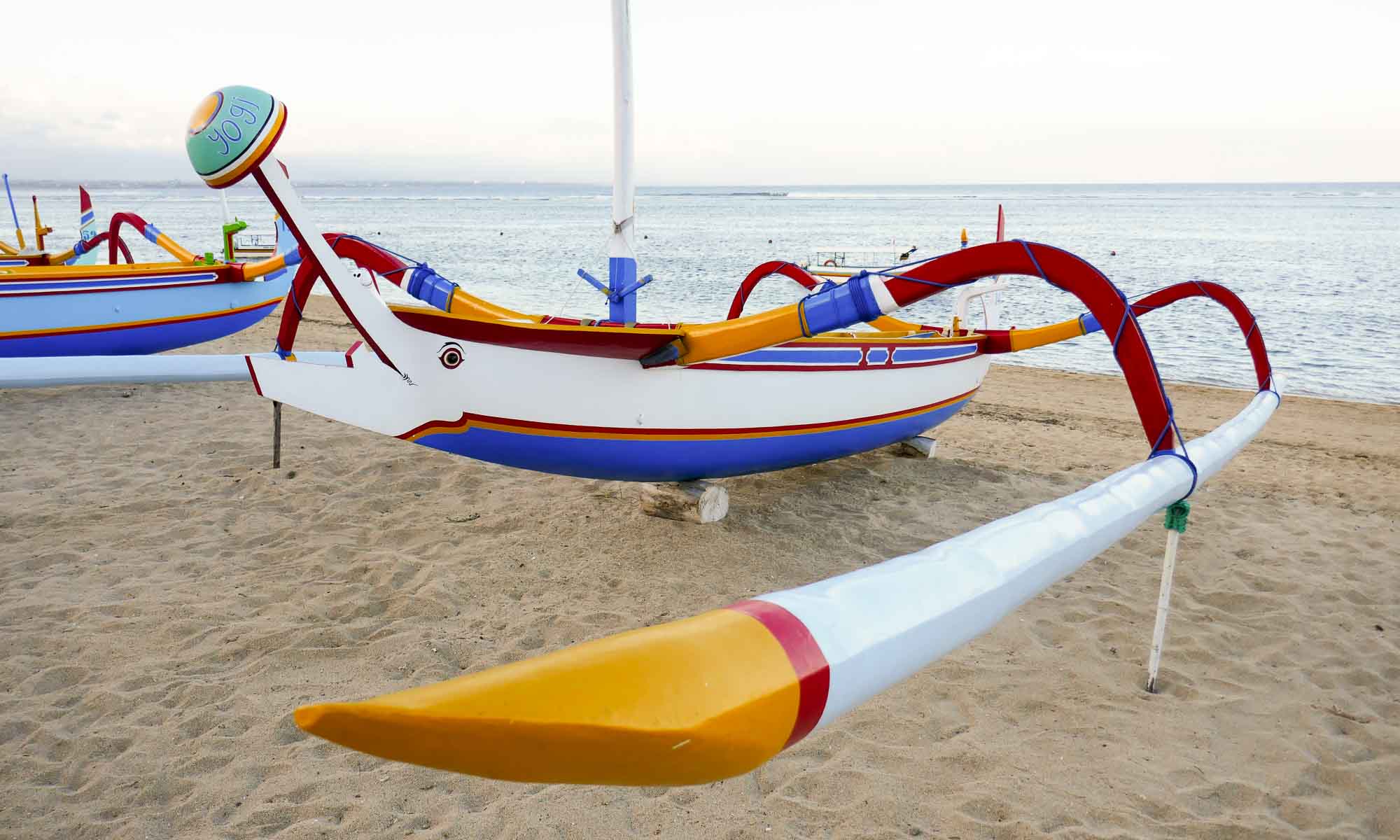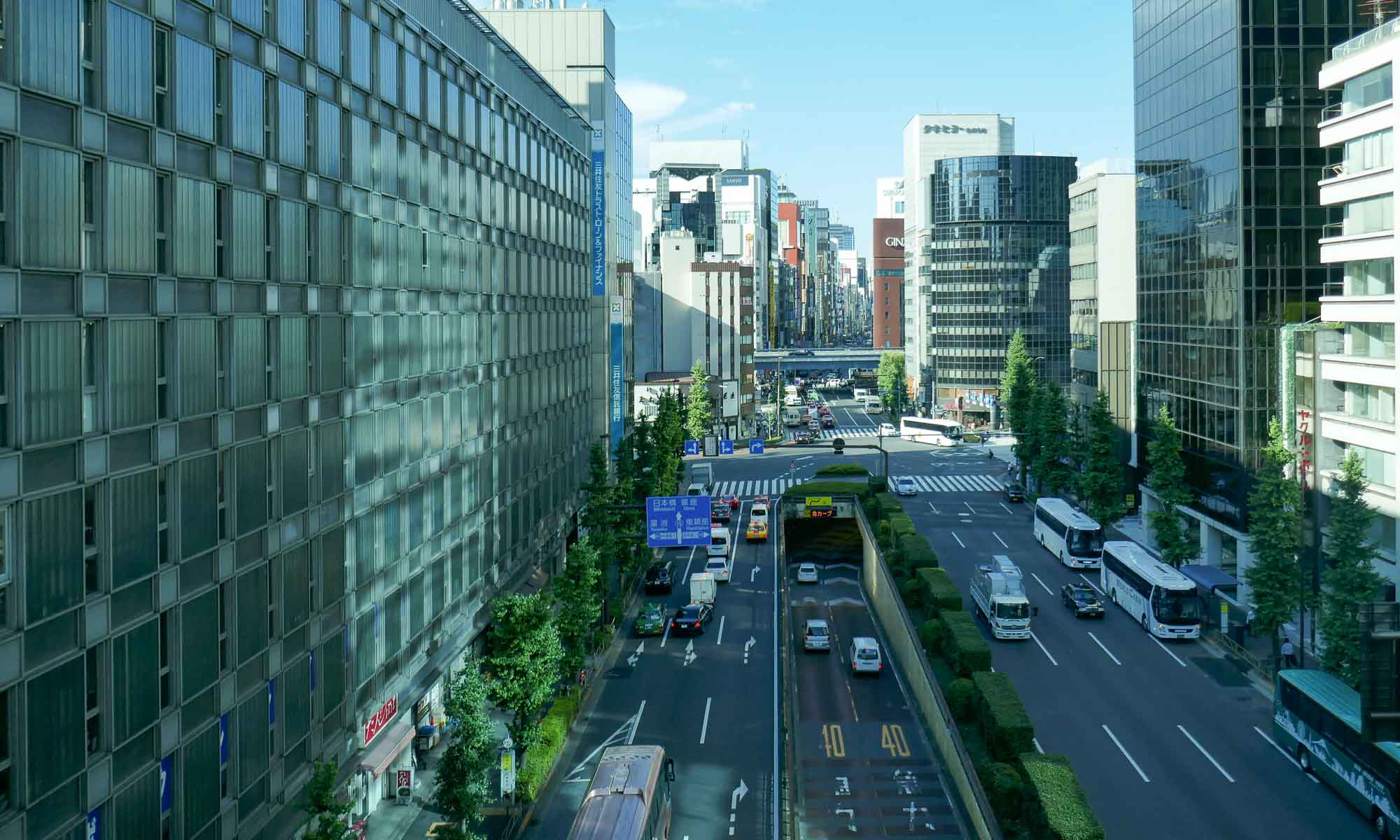The great thing about long-term travel is that for every sour experience, there is enough time for those memories to fade especially when the next place you visit helps to bring everything into perspective. After Kratie, we were looking forward to rounding up our travels in Cambodia and starting on Vietnam. However, after spending some time in Phnom Penh we were actually sad our time had to come to an end.
Phnom Penh, the current capital of Cambodia, lies on the banks of the Tonle Sap and the Mekong River. It began as a village, but was turned into a city by the French colonial administration who built banks, schools, hotels, hospitals and various types of offices. Driving into Phnom Penh, it is easy to see the French influences as well as the fact that the city is a mixture of old and new, with modern restaurants and bars, new apartment complexes and hotels, mingled in among temples and markets.
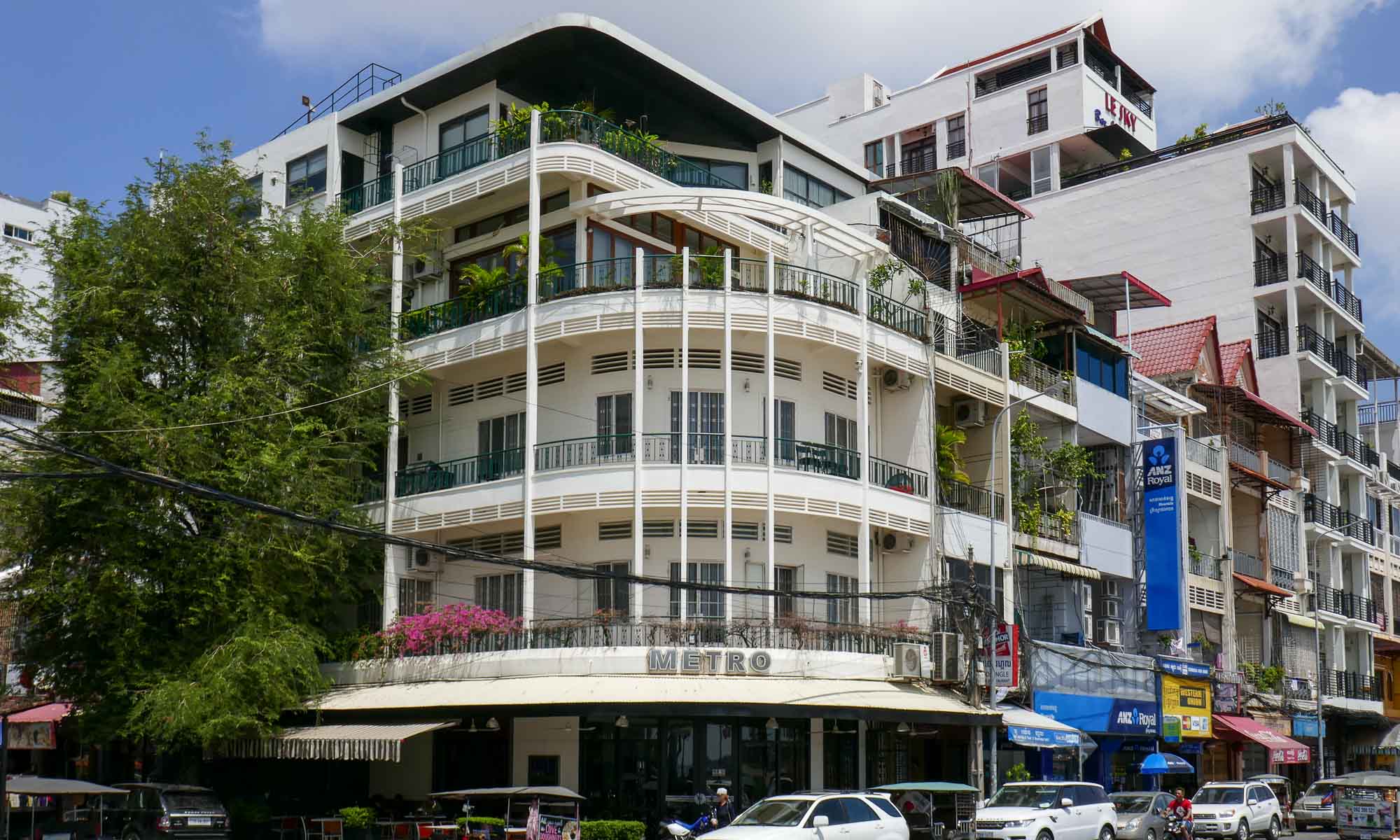
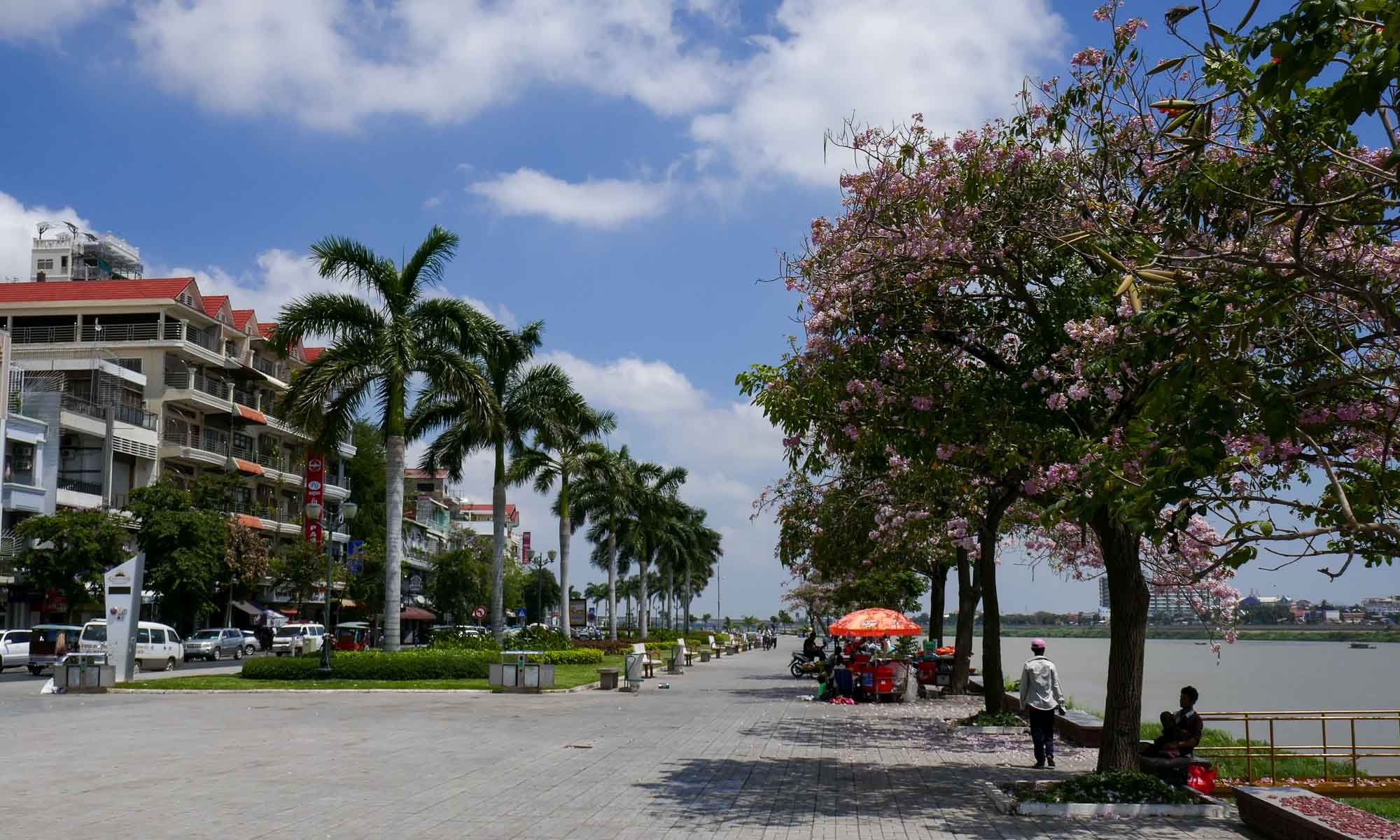
The recent history of Phnom Penh, and Cambodia in general, is a tumultuous one which requires some thorough understanding to really comprehend the struggles the country as a whole is facing. However, it was evident visiting Phnom Penh that strides are being made to not only overcome the past, but to learn from the past.
Highlights in Phnom Penh
With two full days in Phnom Penh, we were able to visit some of the highlights, however we did not visit a number of other key places such as the Royal Palace, the Silver Pagoda or the National Museum.
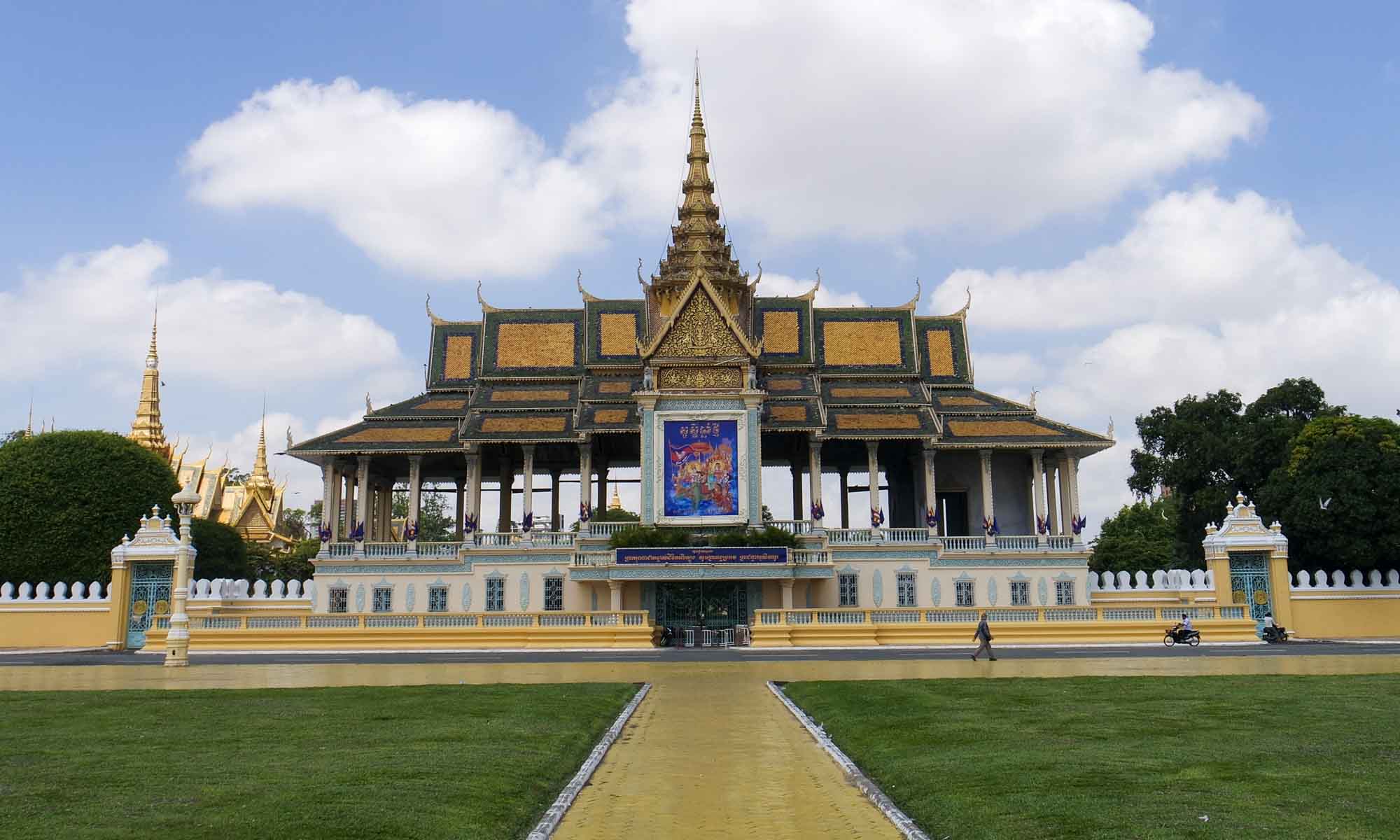
Choeung Ek Genocidal Center
We hired a tuk-tuk for half a day to take us to the Choeung Ek Genocidal Center, the Tuol Sleng Genocide Museum, and the Vietnam embassy, for a total price of $15. Choeung Ek is located roughly 17 km from Phnom Penh and the ride took us about 45 minutes.
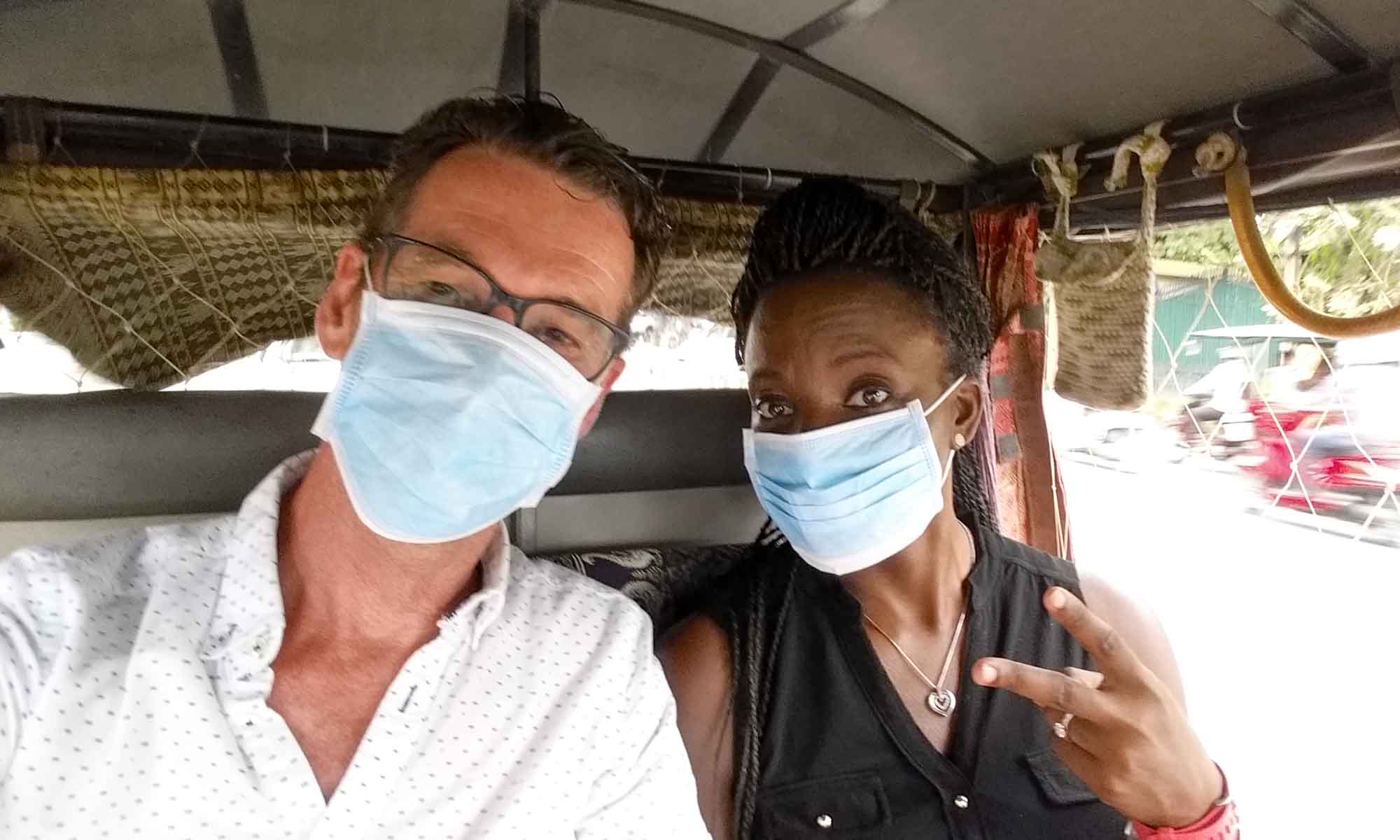
Between 1975 and 1979, during the Khmer Rouge regime approximately 20,000 people, including foreigners were executed here, and buried in a number of mass graves, several of the victims had been tortured and prisoned at the Tuol Sleng Genocide Museum (S-21). To save on bullets and to ensure their activities remained hidden, the methods used to kill the prisoners were some of the most brutal, and as described by Duch (the head of S-21 prison after he was discovered and interviewed in 1999), “they were killed like chickens”. To mask the stench of the bodies in the mass graves, and to kill any victims who might still be alive, DDT was used.
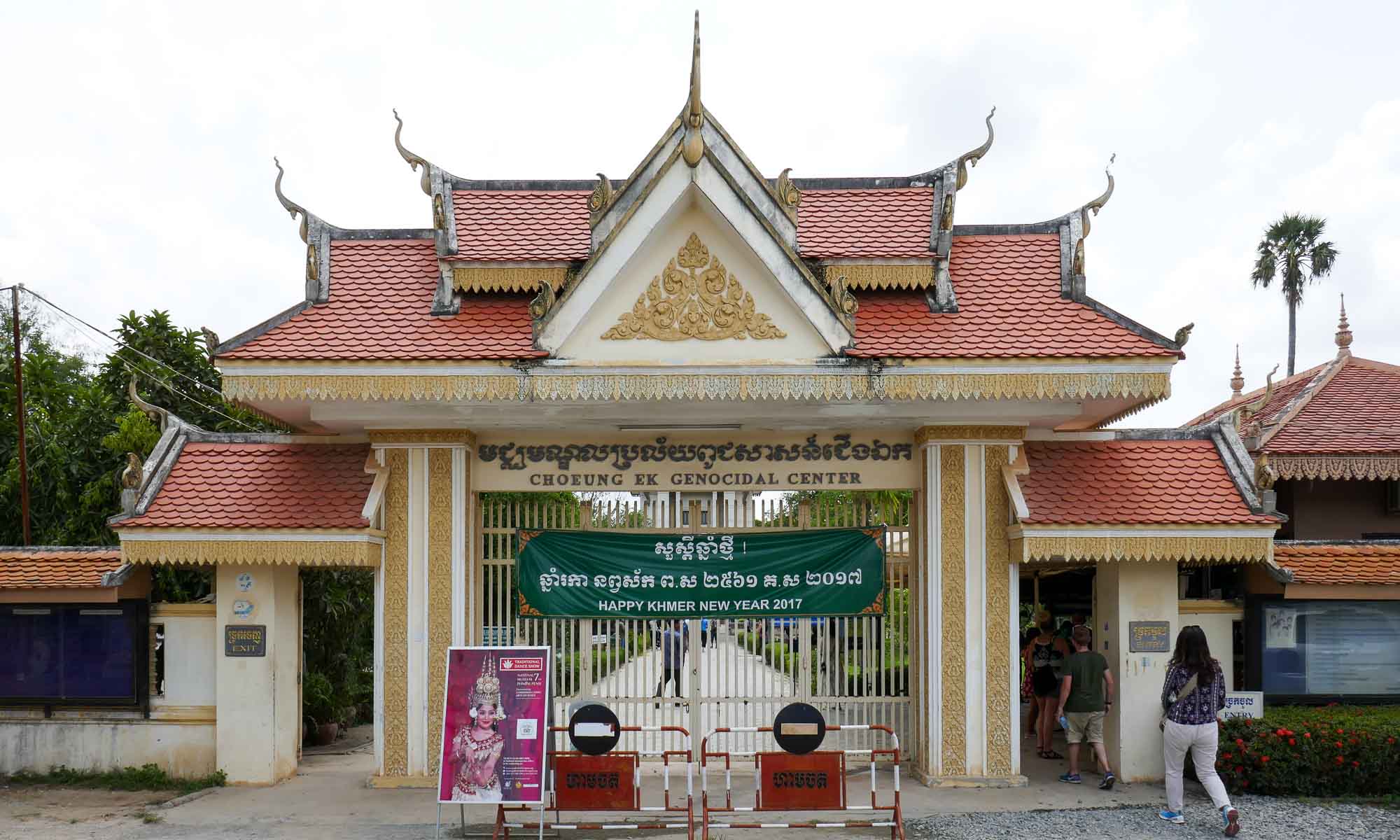
After the fall of the regime, several mass graves were discovered, depicting the brutality and wickedness of the Khmer Rouge. Only a fraction of the mass graves have been exhumed, with most being left untouched. Research has been conducted on the exhumed bodies in an attempt to determine the sex, age and mode of killing used by the regime, which have been used to separate the more than 5,000 skulls and bones displayed in the massive stupa which forms the central point of the museum.
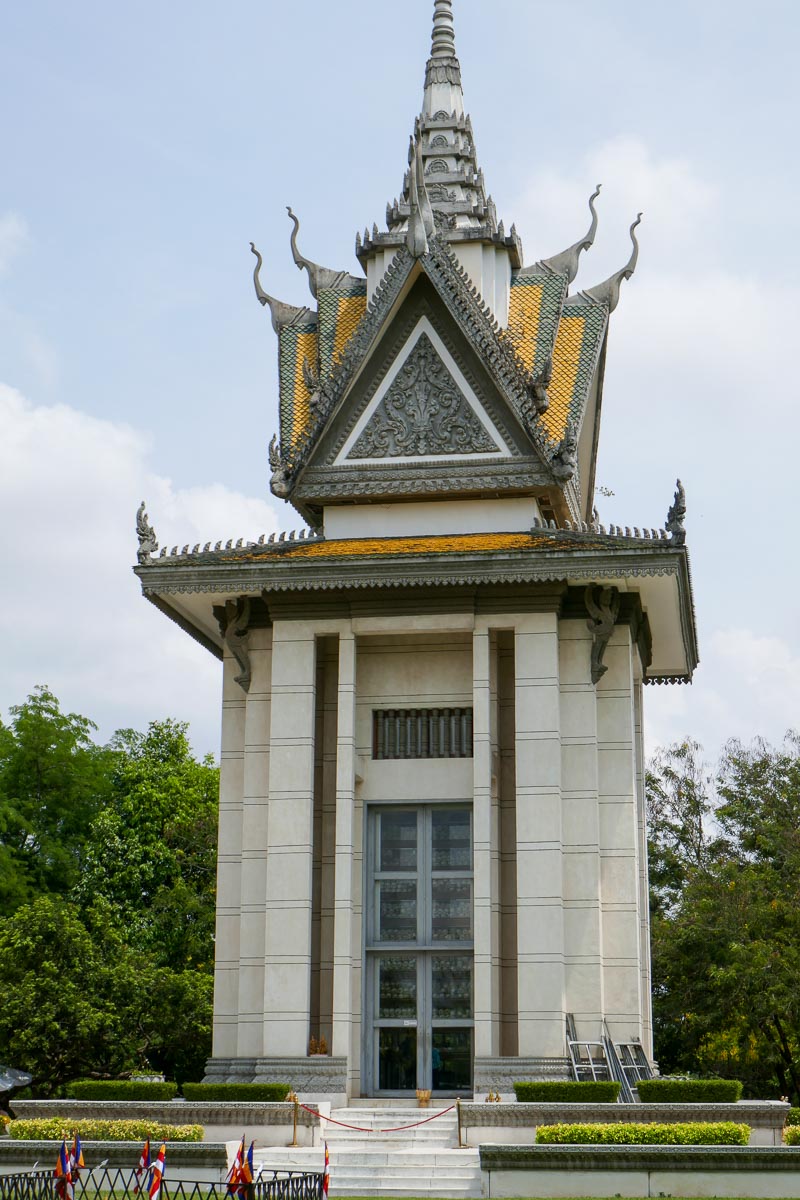
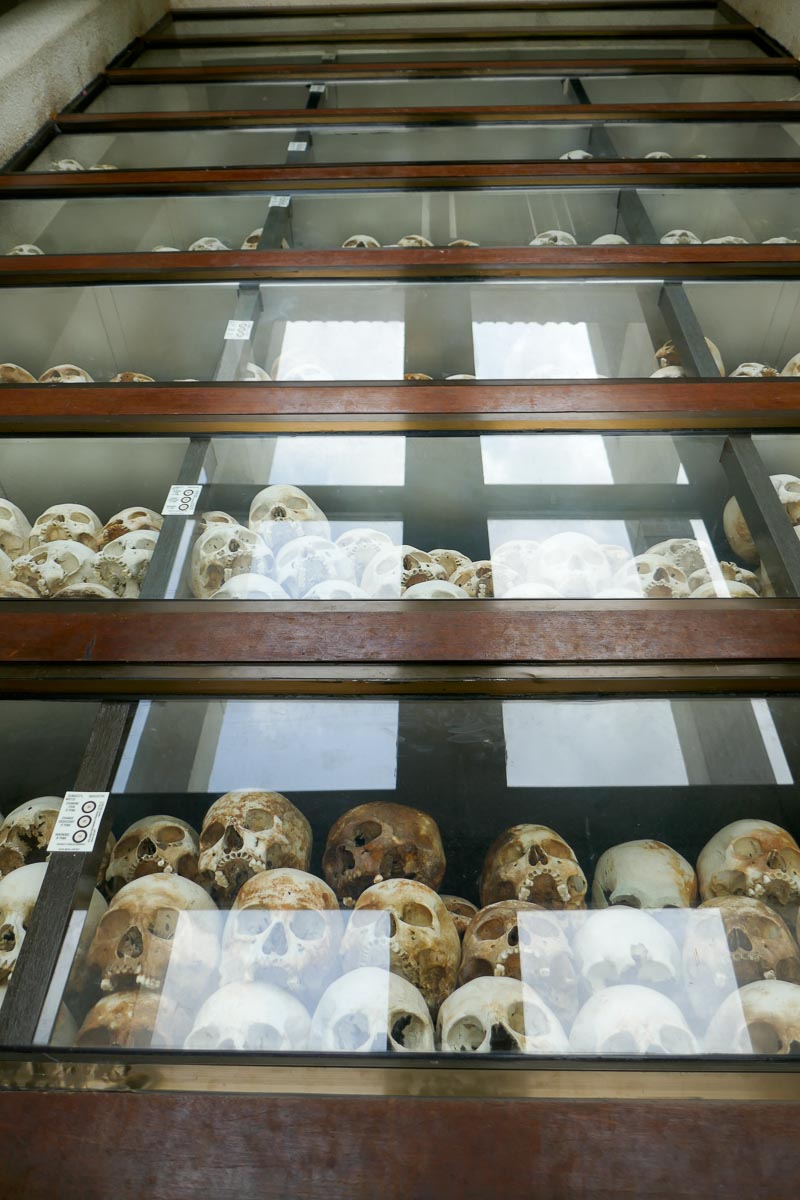
The grounds of the center are well maintained, with informative signs along the walking path. The walking path winds along a number of exhumed or untouched mass graves as well as a lake where bone fragments have been found. One of the most depressing sites is the so-called Killing tree, against which the heads of children and babies were smashed in order to kill them. At the end of the sobering visit, one can only hope and pray that in the current world we live in, there will be less war and more peace.
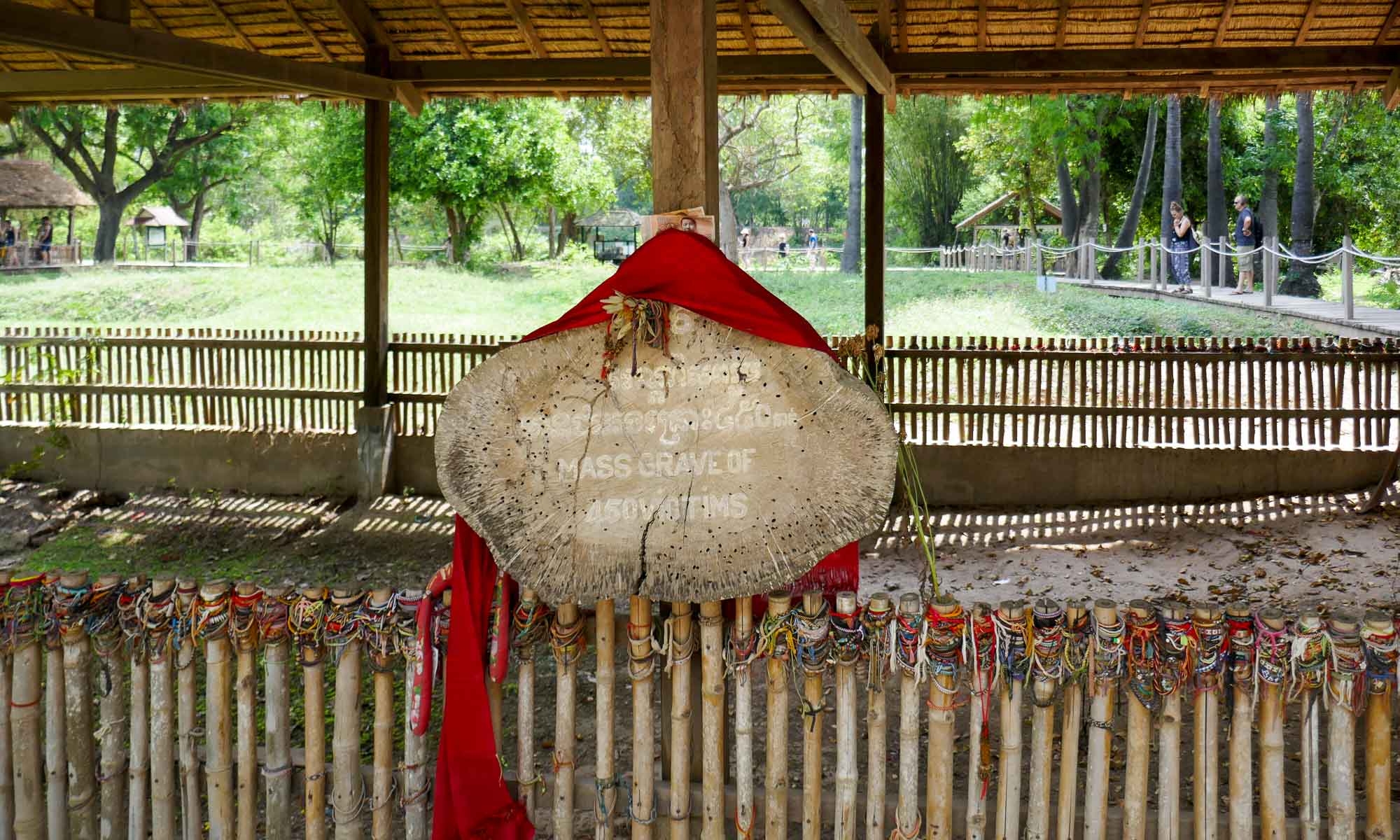

Admission to the museum was $6, including the fee for an audio guide.
For more information on the discovery of Duch and his testimony: Duch interview
Tuol Sleng Genocide Museum (S-21)
When we arrived at the Tuol Sleng Genocide Museum, it clearly resembled what it had been prior to the days of the Khmer Rouge: A school compound, with several classroom buildings! In those days it was known as Tuol Svay Pray High School/Chao Ponhea Yat High School. In 1976, during the Khmer Rouge regime it was renamed to S-21 (Security Prison 21) and became a place of torture, interrogation and execution for between 12,000 to 20,000 prisoners. Each classroom block was commandeered for a particular reason. Some classrooms became interrogation centers, while others became torture chambers or prison cells. The vents in a number of classrooms were blocked out to darken the rooms, and reduce ventilation. Windows were covered with bars to prevent escape. At one point, most of the prisoners were from the previous regime, but also included intellectuals and highly-skilled Cambodians. After this, crazily enough it also included Khmer Rouge supporters and personnel (some from high ranks) who were requested by Pol Pot to be purged (statistics claim this is in the range of 20:80).
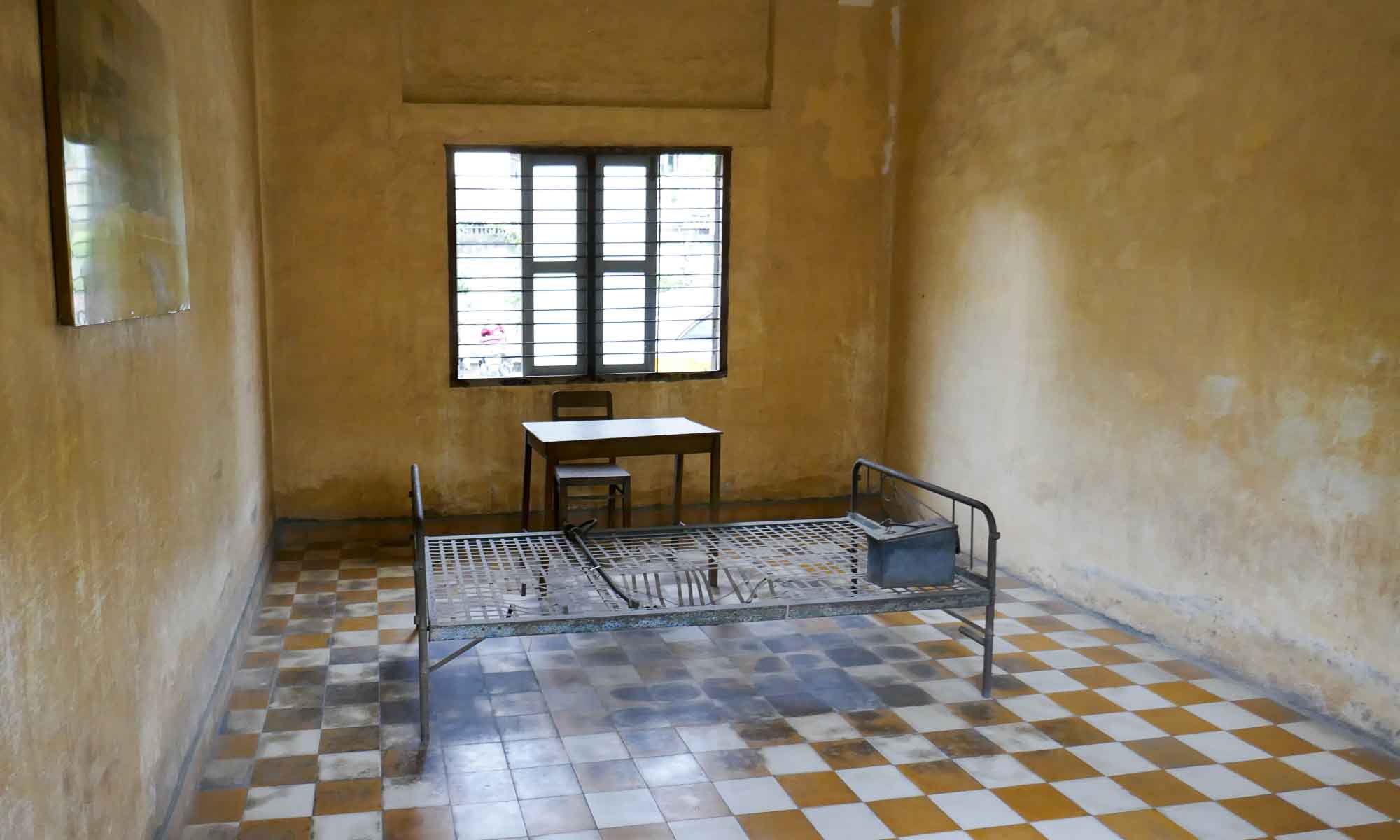

After the end of the Khmer Rouge regime, several photos, documents (including prison registers and confessions) were found. These as well as the building’s that have been left just as they were found all serve to present quite a horrific picture of what actually occurred at S-21. Close to the entrance of the school is a field of 14 white coffins. This is the final resting place of the last 14 victims of the regime, whose corpses were discovered in one of the buildings. It is believed they were killed shortly before the Khmer Rouge guards fled the compound.
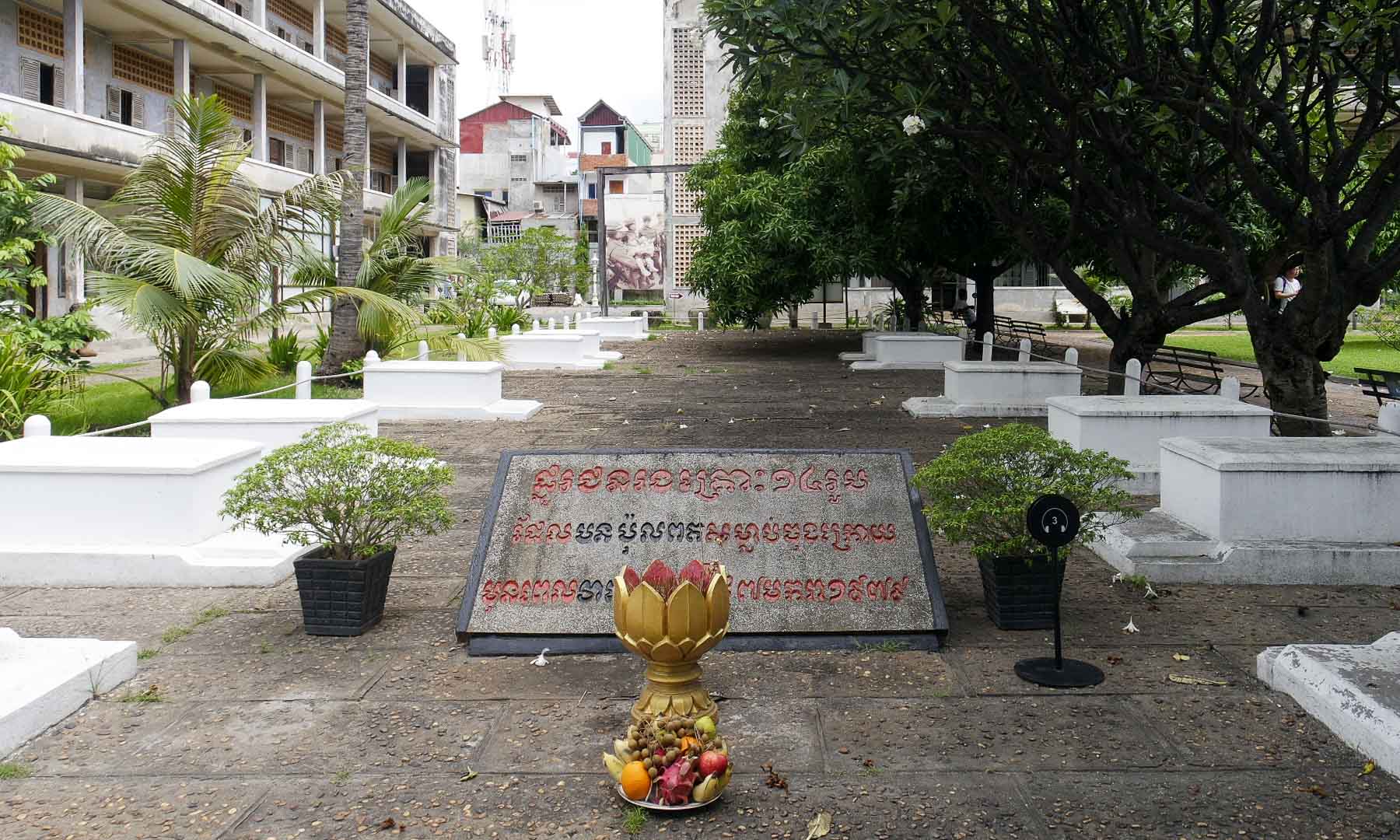
Between some buildings is the outdoor interrogation area, known as “the gallows”, where prisoners were hung upside down and their heads dipped into jars of water.
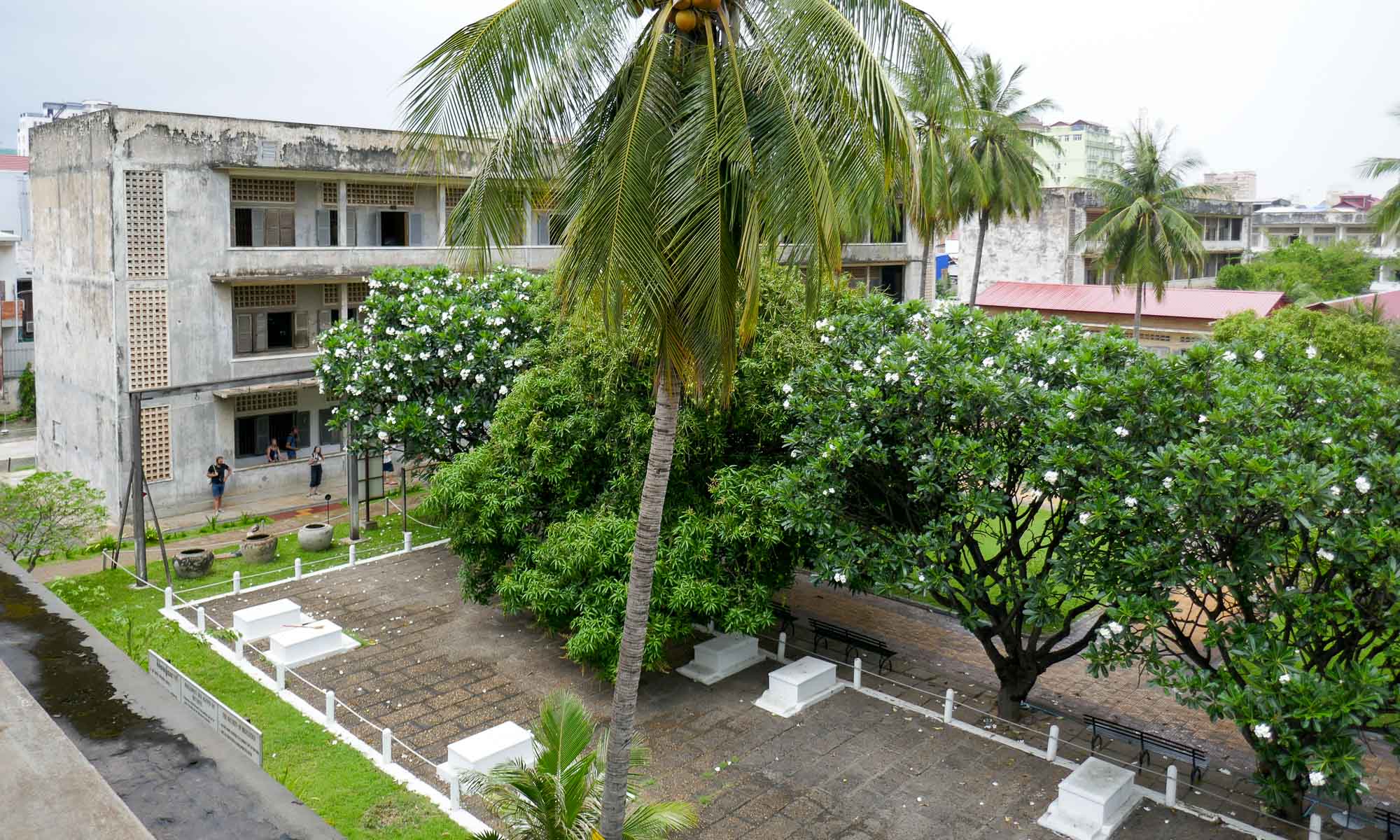
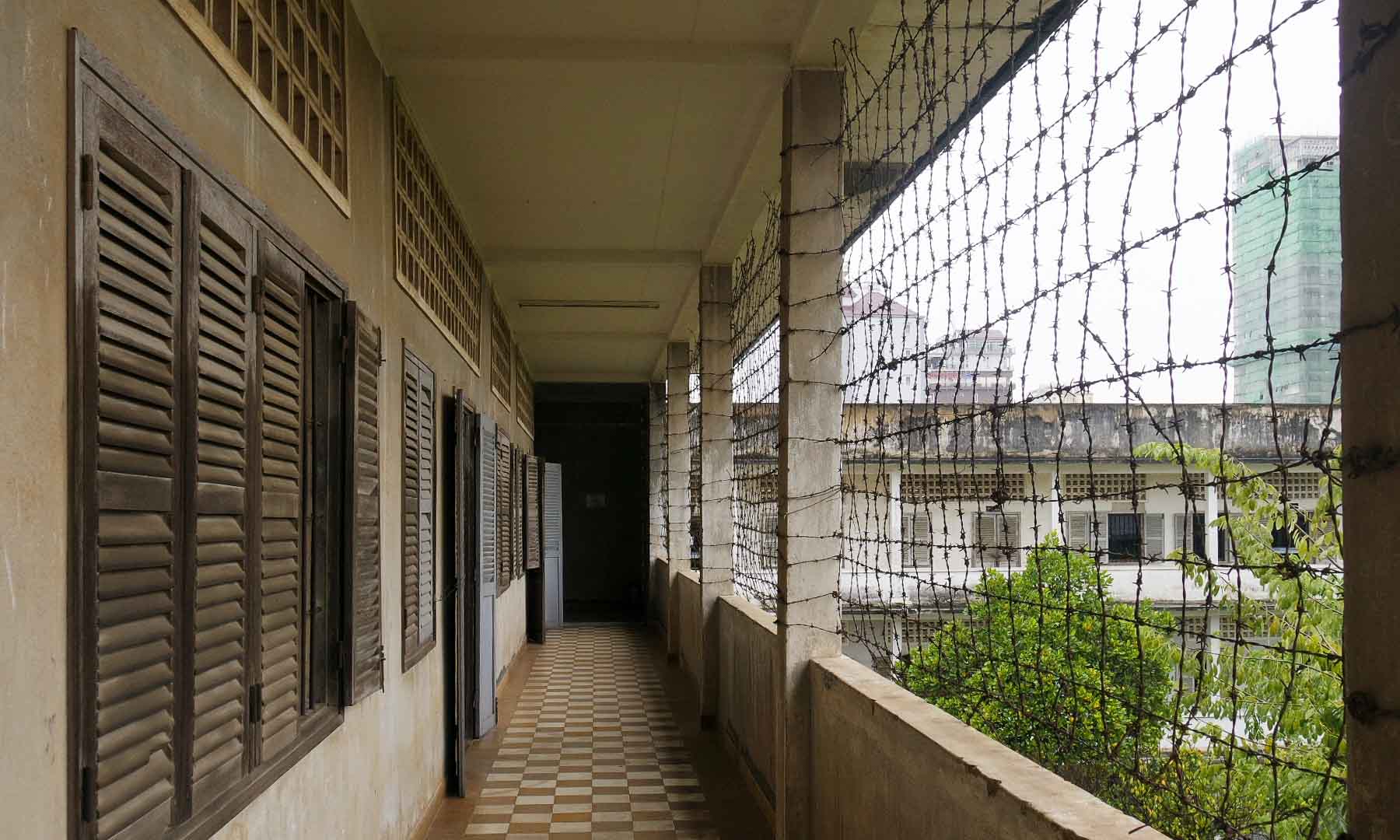
There are only 7 known survivors of the S-21 prisons (though some sources quote 12), with 2 or 3 still alive today. They were kept alive by the regime purely due to their usefulness.
For me, the most tragic aspect of visiting the school, was learning about people such as Gunnar Bergstrom, and to be honest the rest of most of the world, who despite some of the leaks that were coming out, refused to accept that atrocities were being conducted. Questions still arise today as to which countries actually supported the Khmer Rouge blindly, unknowing that the killings were not related to casualties of war. While it is a sobering and disturbing experience to visit such sites, it is important to pay respects to those who have died under such circumstances. As we left the museum, we noticed Chum Mey, one of the 7 survivors napping in a chair, close to where books of his autobiography were being sold.
Admission to the museum was $6, including the fee for an audio guide.
To learn more about the museum, see Killing Fields Museum
To learn more about the trial and tribunal for some surviving Khmer Rouge leaders, see Khmer Rouge Tribunal
Independence Monument and surrounding area
The independence monument at the intersection of Norodom and Sihanouk Boulevard dates back to 1958, and was built to commemorate Cambodia’s independence from France in 1953. We did not find a way to actually get up close to the monument as it is in the middle of the busy intersection. However, located just behind the monument is the statue of Norodom Sihanouk, who was the king of Cambodia from 1941 to 1955, and from 1993 to 2004. The statue of the king is set in an area with well-manicured gardens, trees and fountains, which becomes a popular exercise area for locals at night.
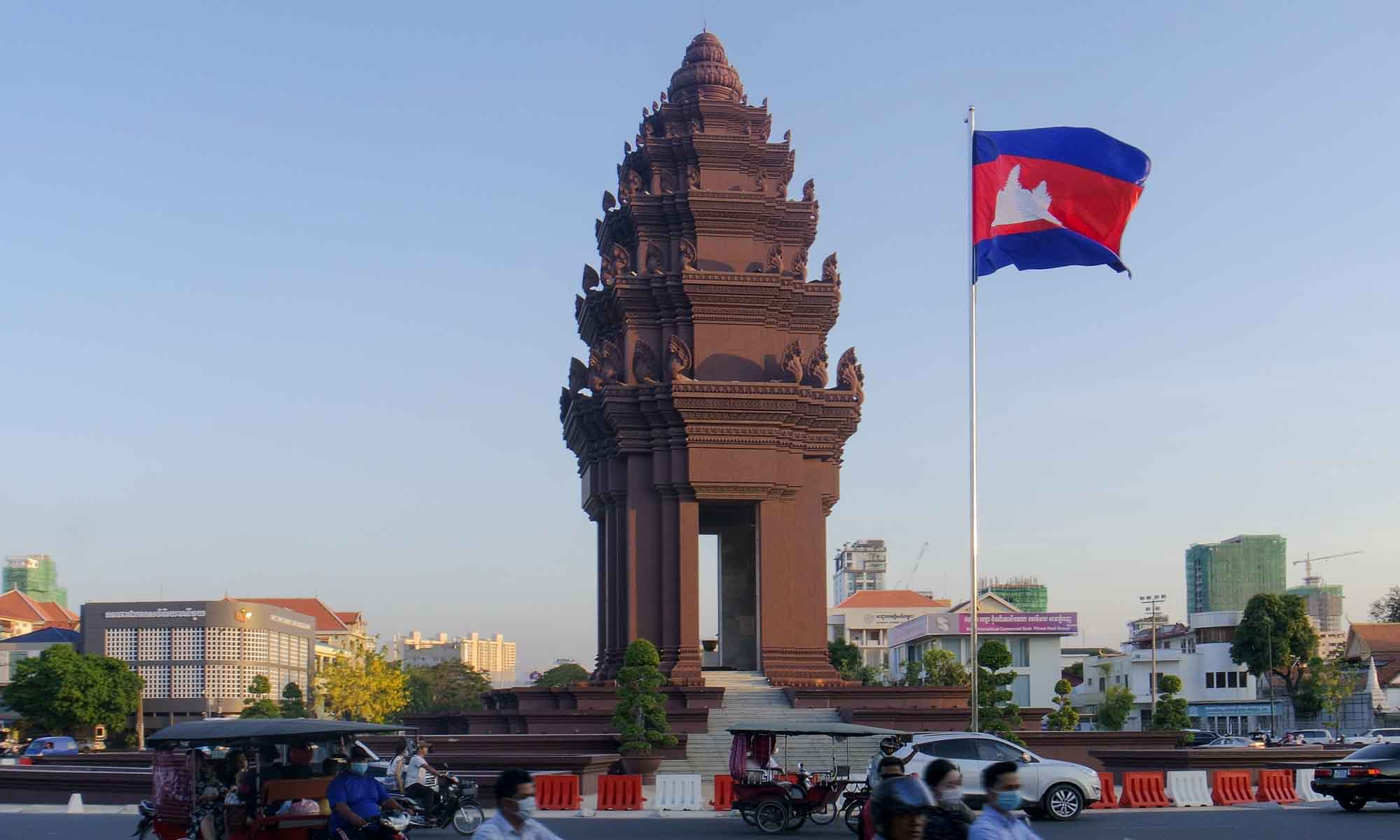
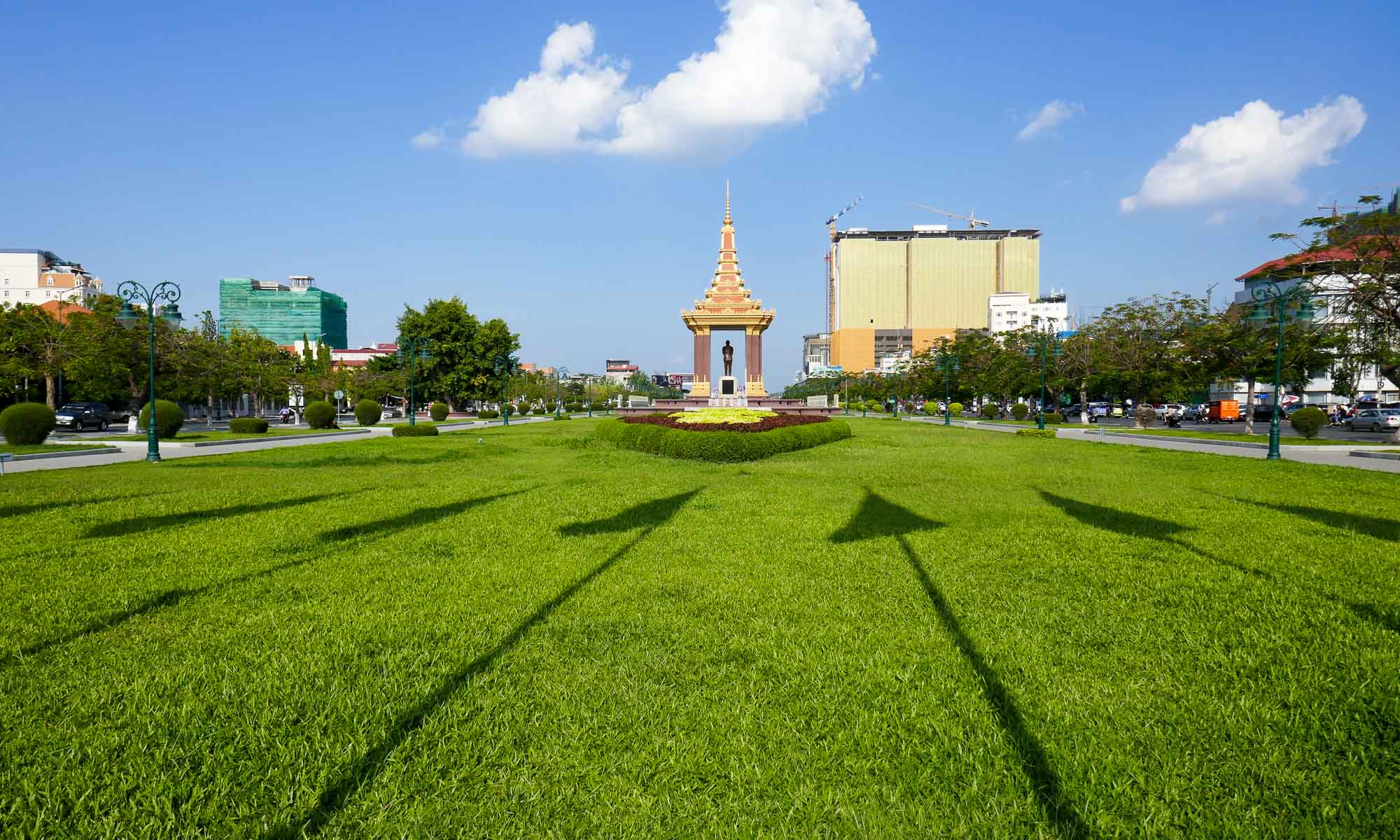
Eating in Phnom Penh
Phnom Penh continues to attract visitors and expats from around the world thus leading to the growth of the restaurant and bar scene.
Sovanna
As we were looking for local food, we ventured out to Sovanna, located not far from the Independence Monument. According to Tripadvisor, it is said to have the best Khmer BBQ in town, and due to its popularity it now has 2 restaurants on the same street. We went to the original and found the place full of locals. The BBQ is cooked right in front of the restaurant, and various “Beer ladies” ply the tables with their variety of beer on offer. We enjoyed the food and atmosphere.
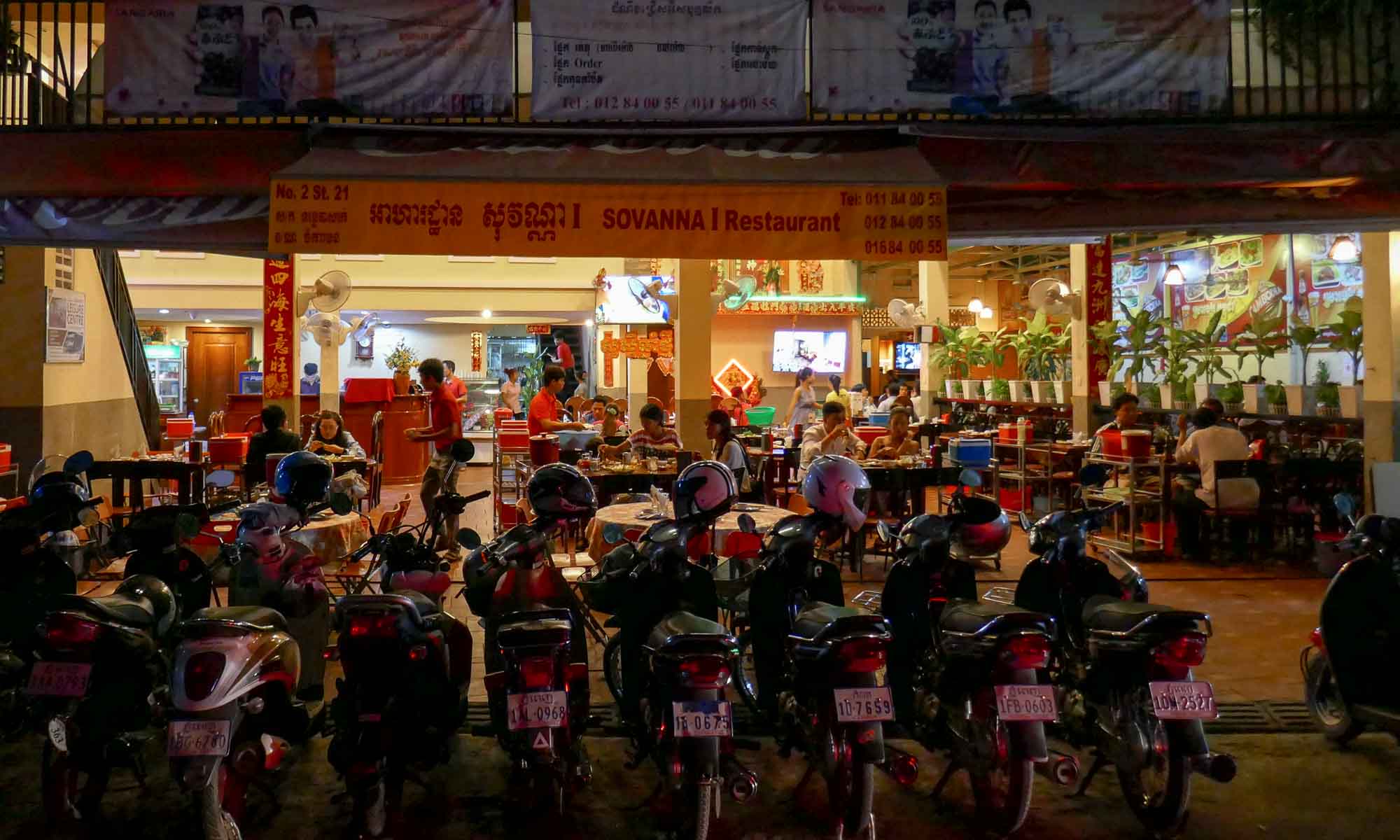
Aeon Mall Food court
Yes, we know this is not necessarily where you would expect to have some good food, but surprises do happen and to be honest, the Aeon Mall Food court offered more extensive choices than we expected. We ate at the Asian Kitchen and definitely enjoyed our food, while people-watching.
Sleeping in Phnom Penh
Our hotel, the Plantation, had been aptly described as an oasis in the midst of the busting city. That description could not have been more perfect, as once you have entered through the doors, it pulls you into a place of peace and calm. The hotel has 2 swimming pools, one for staying guests, and one for day visitors, a gym and a spa. The rooms are well-sized and of a minimalist nature, with everything having a purpose. Breakfast was extensive with both Western and local options.
We spent a total of 3 nights, and the time we spent lounging by the pool will always be remembered fondly.

Getting around Phnom Penh
As soon as our minivan pulled into the Central Market area, we were inundated by hordes of tuk-tuk drivers, all quoting exhorbitant prices for short distances. We walked a short distance to a main street and were able to hire a tuk-tuk for $2, which our hotel had mentioned was a reasonable price.
While Phnom Penh is full of motorbikes and cars, the best way for visitors to get around is by biking, walking or tuk-tuks. We were fortunate enough not to encounter any misfortune while on the tuk-tuks, but we were warned by our tuk-tuk driver as well as our hotel to always be careful with our belongings since drive-by thefts were pretty common (where the thief on his/her scooter would reach in and snatch your phone/bag/whatever and speed away).
Getting to Phnom Penh
The drive from Kratie to Phnom Penh was uneventful and took about 4 hours. Our hotel in Kratie assisted in booking the 7-person minivan which picked us up from our hotel and dropped us at the Central Market in Phnom Penh. Currently, there are no trains between the two places, though several buses ply the route daily.
Phnom Penh – Additional Information
We were due to apply for our Vietnamese visa while in Cambodia, and decided to apply for it in Phnom Penh. The Vietnam Embassy is located close to the main tourist area at Monivong Boulevard. The process was pretty simple. All that was required was a passport photo, a completed application form, and the cash payment. We applied for a 90-day Vietnam visa, which we were able to collect within 48 hours. Drop-off hours are Monday to Friday from 8:30 – 11:30, and collection times from 14:30 – 17:00. We were fortunate to apply for it on the day we arrived, as three days after our arrival was the Khmer New Year and the embassy would have been closed.
